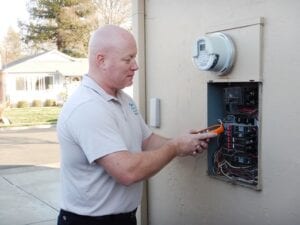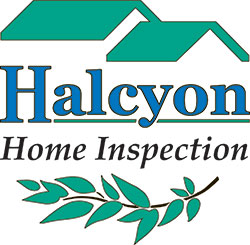About Halcyon Home Inspection
hal·cy·on [hal-see-uh n]
adjective
1. calm; peaceful; tranquil: halcyon weather.
2. rich; wealthy; prosperous: halcyon times of peace.
3. happy; joyful; carefree: halcyon days of youth.
4. of or pertaining to the halcyon or kingfisher.
noun
a mythical bird, usually identified with the kingfisher, said to breed about the time of the winter solstice in a nest floating on the sea, and to have the power of charming winds and waves into calmness.
Home Inspections: What they Are, How they Work

A professional property inspection is an impartial third party visual evaluation of the physical structure, foundation, electrical, plumbing, heating, air-conditioning, roof, built in appliances, interior and exterior walls, doors and windows.
The inspector examines only what is visible and accessible. He’s not moving appliances or climbing onto a steeply pitched roof. He will report cracks in a wall but won’t be able to examine a slab foundation underneath wall-to-wall carpet or hardwood floors.
Download a sample Home Inspection Report >>
Your inspector may find an issue that you would like inspected by a specialist, such as a structural engineer or plumber. Halcyon Home Inspection is committed to performing property inspections of the upmost quality and integrity, using the latest training and equipment available.
The Toolkit We Use to Prepare a Professional Inspection Report
Roof Inspections by Drone

Roofs that were previously unable to be inspected, either due to height or construction type, can now be inspected using a professional quality drone.
Thanks to this recently developed equipment, we can now inspect almost any roof safely without missing the important details. The drone utilizes an onboard 48MP camera and 4K video.
Drone roof inspections are faster, safer and less costly to conduct.
Thermal Imaging
Infrared (thermal imaging) is an advanced, non-invasive technology that allows the inspector to show clients things about their homes or buildings that can’t be revealed using conventional inspection methods. For something as specialized as a thermal imaging inspection, it’s critical that the information presented meets the clients’ needs for information they can use and act on.
The art of an IR inspection is to interpret the results as accurately and reasonably as possible such that the client is given actionable information in order to proceed with necessary repairs.
An infrared inspection can be used to help identify and document moisture intrusion, energy loss, and even unexpected hot spots.
Moisture Meter
A moisture meter is a device designed to measure the moisture content of various building materials, such as roofing, siding, insulation, drywall, plaster, wood, tile and fiberglass. Structural and safety hazards, such as mold, rot and decay are all potential consequences of elevated moisture levels in these materials. A trained inspector can use a moisture meter to locate moisture that would not otherwise be apparent.
Combustible Gas Detector
Most gas leaks found during an inspection of the home are found at gas pipe connections and are small and well below levels that would cause explosion or be considered hazardous. These types of leaks waste gas and cost a homeowner money, similar to a dripping sink faucet or running toilet. A Combustible Gas Detector is a specialized instrument that not only helps to identify these small leaks at their source, but can also be used in areas where we would typically avoid placing our noses.
Borescope
When the inspector needs to inspect and area that is either too small or difficult to view directly, a Borescope can be used. A Borescope is a specialized camera with a 3 foot long, flexible neck, high-definition capabilities, and built-in lights, to allow the inspector to see the inside of the area needed with absolute clarity and detail.
